The recommended tire pressure for a Honda Accord is 32 pounds per square inch (PSI) for both front and rear tires.
Maintaining the right air pressure in your tires is essential to keeping you safe on the road. If your tires are inflated to an incorrect pressure, you run the risk of premature tire wire, decreased steering control, and blowouts on the roads. To keep your car-related costs down and ensure your safety on the road, you’ll need to know the right tire pressure for your Honda Accord.
In this article, the top-rated
car insurance
app
Jerry
will go over everything you need to know about your Honda Accord tire pressure. We’ll help you find the correct pressure for your model, show you how to check your tire pressure and reset the dashboard warning light, and even offer some tips for lowering your
Honda Accord insurance costs
!
RECOMMENDED
No spam or unwanted phone calls · No long forms · No fees, ever
ZIP Code
ZIP Code
Find insurance savings (100% Free)
What is the right tire pressure for a Honda Accord?
In most Accord models, the recommended tire pressure is 32 psi for both front tires and rear tires.
However, the right tire pressure for your Accord may vary depending on which trim level you drive. For example, the Honda Accord LX and Sport models have a recommended tire pressure of 33 psi.
To find out the exact PSI for your Honda Accord model, you can inspect the sticker on the interior of the driver’s side door or check your owner’s manual.
Another factor that may impact your recommended PSI is the type of tire you use. If you upgrade your Accord with high-performance tires, summer tires, or bigger wheels, your PSI may differ from the standard recommendation, so ensure your tires are filled to the correct specification.
Tire pressure recommendations for other Honda vehicles
Vehicle | Front tire pressure | Rear tire pressure |
|---|---|---|
2022 Honda Accord | 32 psi | 32 psi |
2022 Honda CR-V | 32 psi | 30 psi |
33 psi | 33 psi | |
2022 Honda Odyssey | 35 psi | 35 psi |
2022 Honda Pilot | 32 psi | 32 psi |
2022 Honda HR-V | 32 psi | 28 psi |
How to check Honda Accord tire pressure
Unsure how to check your tire pressure? We’re here to help. Depending on the model year of your Accord, you may be notified by a low tire pressure indicator light via your vehicle’s
Tire Pressure Monitoring System (TPMS).
Depending on the model year of your Accord, you may be notified by a low tire pressure indicator light via your vehicle’s
Tire Pressure Monitoring System (TPMS).
If you drive an older, less technologically sophisticated Accord, don’t fret. You can easily check your tire pressure using a
tire pressure gauge
! To do so, remove the valve stem cap on each tire and press the pressure gauge onto the valve stem. The gauge will tell you the pressure of each tire, to which you can add or remove air as needed.
Another simple way to assess your tire’s air pressure is through your vehicle’s performance. If you’ve noticed any changes, including difficulty steering or an uneven ride, your tire pressure may be low.
When in doubt, double-check using a tire pressure gauge at home or at a gas station’s filling station!
How often should you check tire pressure?
It’s recommended that you check your tire pressure on a regular basis (i.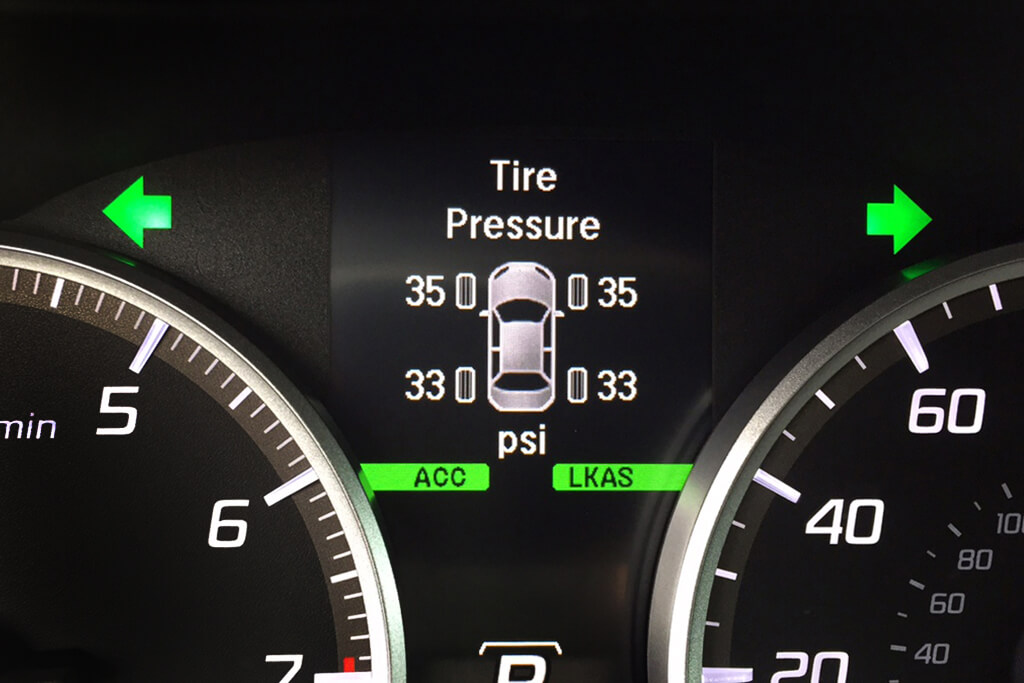 e., once a month), particularly if you’re about to head out on a long road trip.
e., once a month), particularly if you’re about to head out on a long road trip.
ZIP Code
ZIP Code
Find Savings!
No long forms. No spam calls. Free Quotes.
4.7/5 App Store Rating, 8,100+ Reviews
Trusted by 1.5+ Million Customers.
How to tell if your Honda Accord needs new tires
Generally speaking, it’s wise to change the tires on your Honda Accord every six years, but you may need to swap them out sooner if you notice low tread depth or cracks and bulges in the tires.
If you’re unsure whether your tread depth is low or not, use the penny method: stick a penny with Lincoln’s-head-first into the tread. If you can see the top of Lincoln's head, your Accord is ready for some new tires.
How to reset the Honda CR-V tire pressure monitoring system (TPMS) light
You’ve checked the PSI for your Accord and refilled your tires with the right amount of air, but the TPMS warning light is still illuminated in your vehicle. Now what?
Now what?
In this case, you may need to
reset your tire pressure light
by calibrating the system. With your ignition ON and your Accord in P, look under Clock and Vehicle Settings for the TPMS Calibration button. Once you hit enter, your driver information interface should indicate that the calibration has started.
Take your Accord for a 30-minute drive at 30-65 mph and the calibration process will complete automatically, which should turn the TPMS indicator light off.
How to save on Honda Accord insurance
Staying up to date with regular vehicle maintenance, like refilling your tire pressure, is an excellent way to save on vehicle-related expenses. By regularly checking your tire pressure, you’ll avoid potential bank-breaking blowouts, breakdowns, and accidents.
Another easy way to save on ownership costs is to use the
Jerry
app to lower your Honda Accord car insurance cost!
As a
licensed insurance broker
with dozens of partner companies, Jerry can find you competitive quotes for Honda CR-V insurance in under a minute.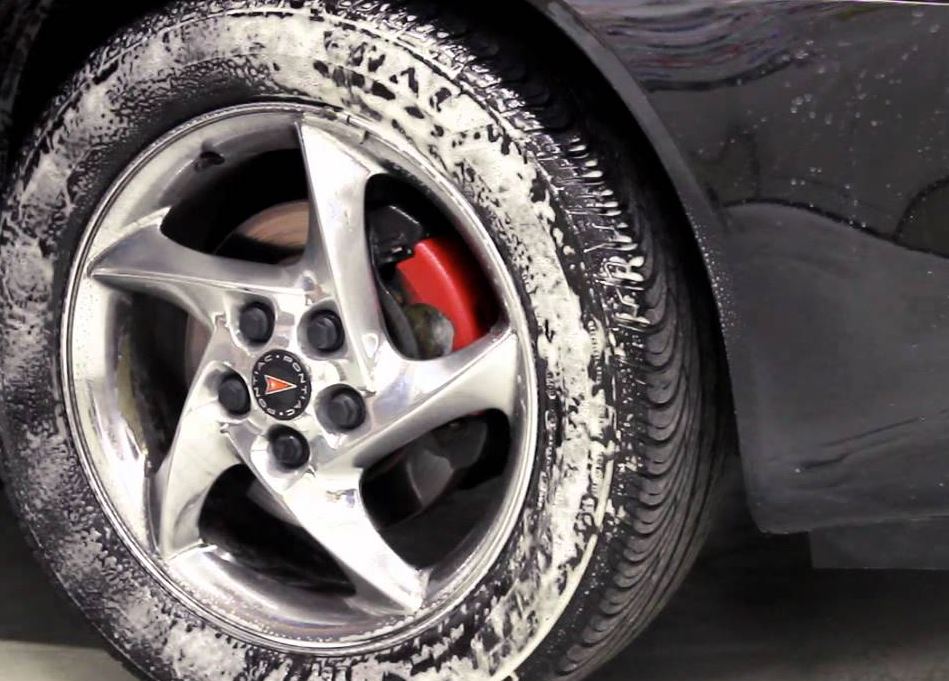 And if you find a rate you like better than your current plan, Jerry’s team of insurance agents will handle all the paperwork and phone calls to get you switched over.
And if you find a rate you like better than your current plan, Jerry’s team of insurance agents will handle all the paperwork and phone calls to get you switched over.
“I saw an ad for
Jerry
on Instagram and decided to give it a try. I have a terrible driving record, but Nathan still helped me. Before, almost no one wanted to insure me. Now, I have a great policy and save $200/month. I’m one happy gal!” —Terri C.
RECOMMENDED
This app is great, but the customer service is even better! Not to mention convenient! My husband and I got the lowest rate (much lower than the rates I was finding online through my own searches), quickly, and pretty much all through text message! Thank you so much for a hassle free experience👍
Gabriella R.
Find insurance savings (100% Free)
4. 7/5 Rating on App Store
7/5 Rating on App Store
The tires’ pressure is very important both for the security and for the performance of our car.
⚠ There are 3 ways of checking which pressure is the recommended for your Accord:
1- In general terms, for street cars, SUVs and Pickups, the recommended pressure is usually around 34 psi. If your car is very loaded, you could go up to 38 psi without problems. For sport cars (with very low profile tires), the usual thing to do is to inflate them to 40 psi.
2- Look up the recommendation in your owner's manual.
3- Look up the tag in your car. You can find it sticked in the internal frame of the driver’s door, in the fuel-charger lid or in the sun shield. It will look like this one you can see here:
The tag with the recommended pressures varies according to the car’s manufacturer.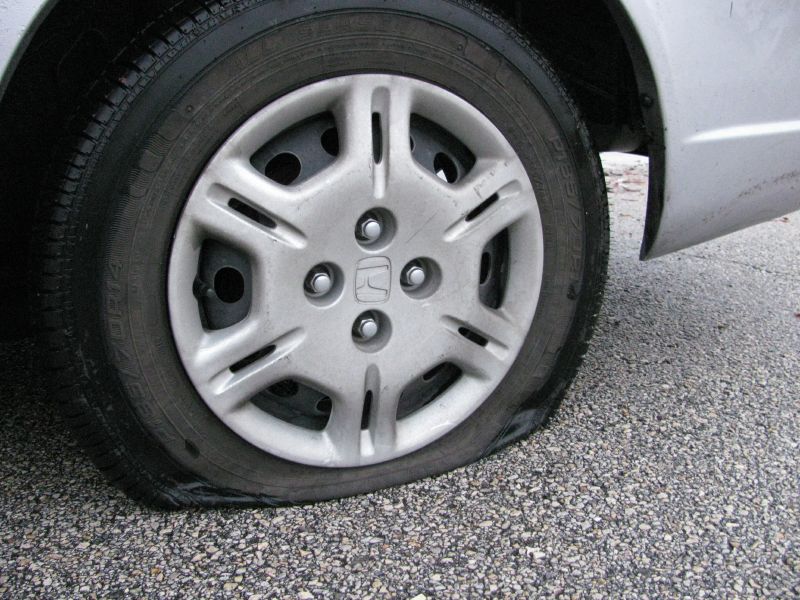 Here we show you an example where you will be able to see how to interpret its data:
Here we show you an example where you will be able to see how to interpret its data:
A - The columns on the right show the pressure of the back tires.
B - The columns on the left show the pressure of the front tires.
C - If we read the rows horizontally we will see that there is a recommended pressure according to the load that our car will carry (represented in people and luggage).
D - The information that appears at the bottom is the recommended pressure for your temporary auxiliary tire, which is not the same as the one recommended for the rest of the tires, due to its smaller size.
E - The data T125/60 and R18 which appears in this example corresponds to the measurements of the temporary auxiliary tire.
Depending on the country of origin of your Accord, the pressure of the tires may be measured in "psi" (commonly called “pounds”) in "bar" or in “Kpa”. That’s why in your car’s chart you can find any of them. Take the machine that you will use for the measurements and check which unit it uses and consider only that data in the tag. The other data will be the equivalent in other units, so you don’t need to use it.
The other data will be the equivalent in other units, so you don’t need to use it.
The tires’ pressure was well studied by the manufacturers in order to guarantee:

The correct tire inflation level ensures that the tires’ footprint is optimal. More or less pressure will provoque undesired deformations. As a consequence, there will be an uneven erosion and less adherence than the one needed.
You can use other pressure, but only in specific situations and knowing its possible consequences:
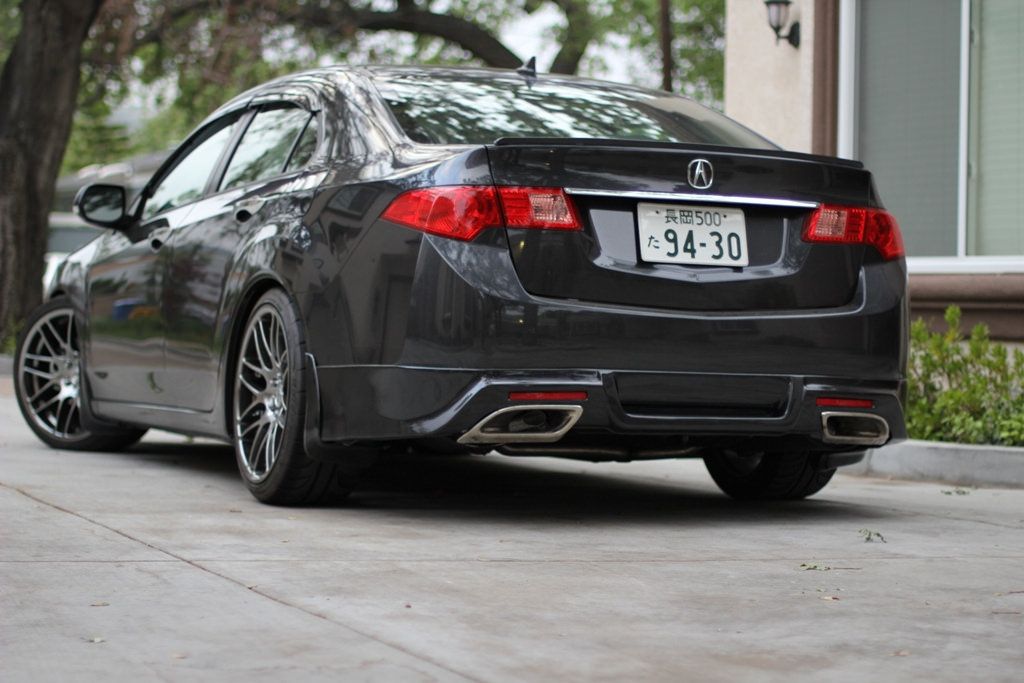
⚠ An important recommendation: while circulating in wet grounds (such as the ones you find on a rainy day), it is key to keep the adequate pressure, recommended by the manufacturer; because it will guarantee you better adherence to the ground and therefore you will avoid accidents.
Have you found an error in this guide? Let us know
Was this information useful?
Thank you!
Read more about Honda
and Tires' pressure
How to change one of your Accord‘s wheels?
What kind of information is engraved in the tires of your Accord?
How to rotate the tires of your Accord?
Honda Accord 2012 2.4
Wheels Brakes
Can't drive a half of a miles without wheels getting hot and my brakes are very hard.
Front tire unexcetible wearHonda Accord 2013 sedan 3.5l
Wheels Vibration
Strange vibration sometime and very bad wearing of front tires on the inside but otherwise love the car
Excessive road noiseHonda Accord 2010 Sedan EX-L
Steering wheel Belt tensioner Wheels .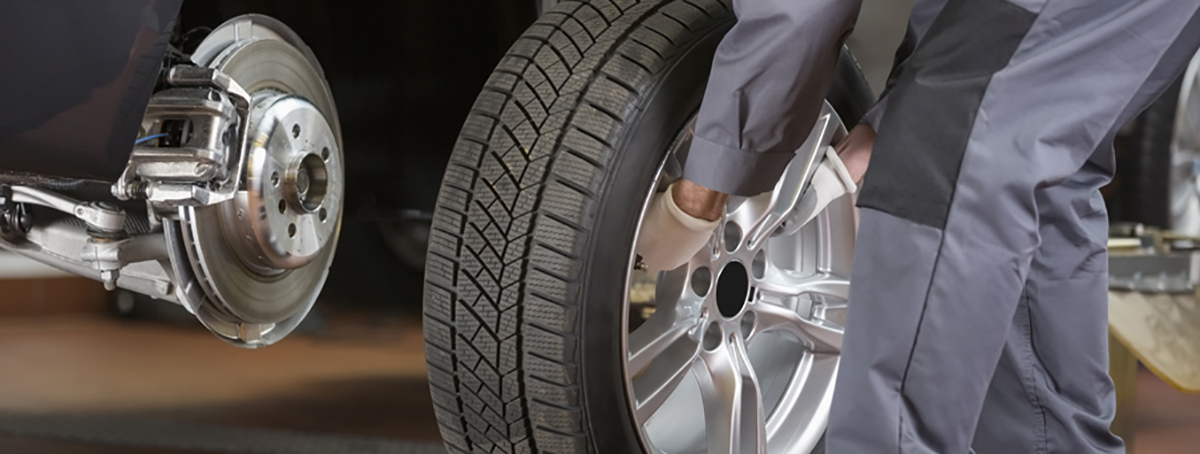 ..
..
Hey guys can someone help shed some light on my situation. When driving fast, slow, or even normal speed it sounds like my engine is in the passenger seat. When I first got the car last year I though…
Issues 2009 Honda Accord LX 4dr 2.4LHonda Accord 2009 LX Sedan 2.4L 5A
Brake caliper Overheating Wheels ...
Rear tires overheated to the point that it would burn a hand that touched it on 6-11-2012 (mileage 46,384). Smelled of burning rubber. Had to replace the left rear brake caliper, brake pad, and rotor.…
2014 Accord Sport issuesHonda Accord 2014 Sport Sedan 2.4L CVT
Wheel alignment Steering wheel Stiff steering ...
I was getting service done on my 2007 honda civic recall http://www. Consumerreports. Org/cro/news/2014/03/free-engine-replacement-for-2006-2009-honda-civics/index.htm. I was given 2014 honda accord a…
Do you like StartMyCar? Follow us on Facebook
Popular searches
RadioClutchOverheatingFusebox
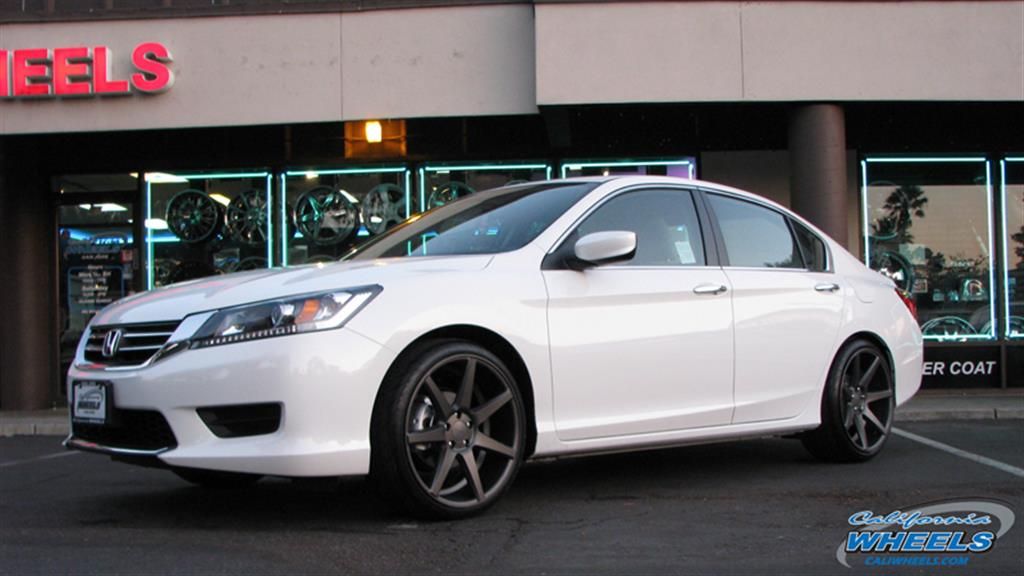 Consumables for maintenance Honda Accord.
Consumables for maintenance Honda Accord. To extend the life of your vehicle, it is essential to have your Honda Accord regularly serviced. The Honda Accord maintenance schedule is developed by the manufacturer for each individual model. It specifies when and how to change consumable parts on the vehicle, change oils and other process fluids.
Honda Accord scheduled maintenance is necessary to keep the car in good technical condition, as well as to ensure reliable and safe operation of the vehicle.
Honda Accord maintenance schedule includes more than two dozen different work operations. The section containing the Honda Accord maintenance regulations will help the car owner determine how much oil needs to be poured into the car engine, as well as find out exactly what diagnostics and spare parts replacement work will be carried out at the Honda service center.
The Honda Accord maintenance schedule is a set of recommendations from engineers, taking into account all the features of each model. The frequency of the technical inspection and its procedure must be indicated in the service book of the Honda Accord car, which is one of the mandatory documents for any vehicle.
The frequency of the technical inspection and its procedure must be indicated in the service book of the Honda Accord car, which is one of the mandatory documents for any vehicle.
Regular and timely maintenance of Honda Accord allows you to detect and prevent possible technical malfunctions in a timely manner. Thus, the service life of the car is extended, the cost of fuel and consumable spare parts are reduced, which can significantly save money on the overall operation of the Honda Accord.
All maintenance of a Honda Accord car can be divided into three main types - daily, scheduled and seasonal.
Honda Accord daily maintenance includes checking instruments, brakes and steering, headlights and other warning devices, mirror tilt levels, and a general inspection of the car.
Honda Accord scheduled maintenance is more complex and should be performed at a Honda Service Center where qualified technicians will perform all the necessary work using special equipment for diagnosis and repair. Cleaning, control, lubrication of parts and assemblies, fixing work is carried out.
Cleaning, control, lubrication of parts and assemblies, fixing work is carried out.
Diagnostic work that must be performed during the annual scheduled maintenance of Honda Accord cars:
Valve clearance adjustment
Reading parameters and error codes using HDS//MVCI
Checking the engine speed at idle
Checking the condition and tension of attachment drive belts
Checking the operation of lighting devices and adjusting headlights
Check the condition of the wheels and tire pressure (including spare wheel)
Checking the condition and level of technical fluids
Checking the condition of the wiper blades
Checking the condition of the front and rear brakes
Checking the operation of the parking brake
Battery check
Checking tie rod ends, steering gear, protective covers
CO/CH test
Checking parts and wheel suspension units
Checking the protective covers of the drive shaft joints
Checking brake lines and hoses (including ABS)
Checking the exhaust system
Checking the pipelines and connections of the fuel system
Checking the condition of the hinges and locks of the car doors
Checking the condition and operation of power windows
Visual inspection of the condition of the radiator of the air conditioner and the radiator of the cooling system
Checking the condition of suspension parts
Checking the condition of the protective covers of the drive shafts
Checking the condition of the brake hoses and tubes (including the ABS system)
Wheel change
Check the condition of the fuel lines and connections
Checking the car in motion (noise, stability, operation of indicators and indicators on the dashboard)
Checking the front wheel alignment
Cleaning and lubricating brake caliper guides.
Replacing consumables
Engine oil
Drain washer
Oil filter
Engine air filter
Cabin filter
Fuel filter (petrol engine)
Spark plugs (check at every maintenance and change if necessary)
Antifreeze (recommended to change every 2-3 years)
Automatic transmission oil (recommended to change every 3 years)
Automatic transmission drain plug washer
Brake fluid change (recommended to change every 2-3 years)
Clutch fluid replacement (recommended to change every 2-3 years)
Power steering oil check (recommended to change every 2-3 years)
Drive belts (check at every maintenance and change if necessary)
Brake pads, front (check at every maintenance and change if necessary)
Brake pads, rear (check at every maintenance and change if necessary)
Seasonal maintenance prepares the vehicle for winter or summer operation. Seasonal maintenance includes tire replacement, anti-corrosion treatment and other simple work.
Seasonal maintenance includes tire replacement, anti-corrosion treatment and other simple work.
All maintenance on your Honda Accord is equally important. Regular maintenance of a Honda Accord car with preventive maintenance and replacement of worn parts will ensure long and flawless operation of the car for many years.
Happy owners of a Honda Accord car are not spared by the choice of tires and wheels. In order to choose the best option that will suit the motorist in terms of quality and cost, it is necessary to approach this issue with all responsibility.
Car tires must match the size of the vehicle. Their load and speed index must correspond to the characteristics specified in the technical documentation for the machine.
If a car enthusiast does not have the time and desire to understand such issues, KOLOBOX specialists are happy to help with the choice.
Honda is factory equipped with tire sizes: 195/65 with a diameter of 17 inches and 205/55 with a diameter of 16 inches. The operation of these wheel sizes guarantees a harmonious interaction between steering and suspension. The transfer of impact on the steering wheel and pedals to the wheels will be as fast and clear as possible.
The operation of these wheel sizes guarantees a harmonious interaction between steering and suspension. The transfer of impact on the steering wheel and pedals to the wheels will be as fast and clear as possible.
The table below shows the recommended parameters for tires (on the left side of the table) and wheels (on the right side). Honda Accord, produced since 1990, today has five modifications, based on which it is necessary to determine the size of the wheels.
| HONDA ACCORD 01.01.1990 - 01.09.1998 IV,V(CB3,CB7,CC7) 1.8/2.0/2.2 | |||||||
|---|---|---|---|---|---|---|---|
| Front axle and rear axle | Front axle and rear axle | ||||||
| R14 | R14 | ||||||
| Orig | 165/R14 | winter | summer | Orig | 5x14 4*114.3 d64-64.1 ET50 | casting | stamp. |
| Orig | 165/60R14 | winter | summer | Replacement | 5-6x14 4*114. | casting | stamp. |
| Orig | 185/70R14 | winter | summer | ||||
| Replacement | 155/65R14 | winter | summer | ||||
| Replacement | 195/65R14 | winter | summer | ||||
| R15 | R15 | ||||||
| Orig | 185/65R15 | winter | summer | Orig | 5.5x15 4*114.3 d64-64.1 ET50 | casting | stamp. |
| Orig | 205/55R15 | winter | summer | Replacement | 5.5-7x15 4*114.3 d64-100 ET35-49 | casting | stamp. |
| Orig | 195/60R15 | winter | summer | ||||
| R16 | R16 | ||||||
| Replacement | 195/55R16 | winter | summer | ||||
| Replacement | 205/50R16 | winter | summer | ||||
| HONDA ACCORD 01. | |||||||
| Front axle and rear axle | Front axle and rear axle | ||||||
| R14 | R14 | ||||||
| Orig | 185/70R14 | winter | summer | Orig | 5.5x14 4*114.3 d64-64.1 ET60 | casting | stamp. |
| Replacement | 195/65R14 | winter | summer | Replacement | 5-6x14 4*114.3 d64-100 ET35-59 | casting | stamp. |
| R15 | R15 | ||||||
| Orig | 195/60R15 | winter | summer | Orig | 6x15 4*114.3 d64-64.1 ET60 | casting | stamp. |
| Replacement | 205/55R15 | winter | summer | Replacement | 6-7x15 4*114. | casting | stamp. |
| Replacement | 185/65R15 | winter | summer | ||||
| R16 | R16 | ||||||
| Replacement | 215/45R16 | winter | summer | ||||
| Replacement | 205/50R16 | winter | summer | ||||
| Replacement | 195/55R16 | winter | summer | ||||
| R17 | R17 | ||||||
| Replacement | 235/40R17 | winter | summer | ||||
| Replacement | 215/45R17 | winter | summer | ||||
| HONDA ACCORD 01/01/2003 - 01/01/2007 VII 2.0/2.2/2.4 | |||||||
| Front axle and rear axle | Front axle and rear axle | ||||||
| R15 | R15 | ||||||
| Orig | 195/65R15 | winter | summer | Orig | 6. | casting | stamp. |
| Replacement | 205/60R15 | winter | summer | Replacement | 6-7x15 5*114.3 d64-100 ET20-55 | casting | stamp. |
| R16 | R16 | ||||||
| Orig | 205/55R16 | winter | summer | Orig | 6.5x16 5*114.3 d64-64.1 ET55 | casting | stamp. |
| Replacement | 225/50R16 | winter | summer | Replacement | 6-8x16 5*114.3 d64-100 ET20-55 | casting | stamp. |
| R17 | R17 | ||||||
| Replacement | 225/45R17 | winter | summer | Orig | 7x17 5*114.3 d64-64.1 ET55 | casting | stamp. |
| Replacement | 205/50R17 | winter | summer | Replacement | 6. | casting | stamp. |
| R18 | R18 | ||||||
| Replacement | 225/40R18 | winter | summer | Replacement | 7-9.5x18 5*114.3 d64-100 ET20-54 | casting | stamp. |
| Replacement | 205/45R18 | winter | summer | ||||
| HONDA ACCORD 01/01/2007 - 01/01/2012 VIII 2.2/2.4/3.5 | |||||||
| Front axle and rear axle | Front axle and rear axle | ||||||
| R16 | R16 | ||||||
| Orig | 215/60R16 | winter | summer | Orig | 6.5x16 5*114.3 d64-64.1 ET50 | casting | stamp. |
| Replacement | 225/55R16 | winter | summer | Replacement | 6-8x16 5*114. | casting | stamp. |
| R17 | R17 | ||||||
| Orig | 225/50R17 | winter | summer | Orig | 7.5x17 5*114.3 d64-64.1 ET55 | casting | stamp. |
| Replacement | 245/45R17 | winter | summer | Replacement | 7-8x17 5*114.3 d64-100 ET20-55 | casting | stamp. |
| R18 | R18 | ||||||
| Orig | 225/45R18 | winter | summer | Orig | 7.5-8x18 5*114.3 d64-64.1 ET55 | casting | stamp. |
| Replacement | 235/45R18 | winter | summer | Replacement | 7-9.5x18 5*114.3 d64-100 ET20-55 | casting | stamp. |
| Replacement | 245/40R18 | winter | summer | ||||
| HONDA ACCORD 01/01/2013 IX 2. | |||||||
| Front axle and rear axle | Front axle and rear axle | ||||||
| R16 | R16 | ||||||
| Orig | 215/60R16 | winter | summer | Replacement | 6-8x16 5*114.3 d64-100 ET20-55 | casting | stamp. |
| R17 | R17 | ||||||
| Orig | 225/50R17 | winter | summer | Orig | 7.5x17 5*114.3 d64-64.1 ET55 | casting | stamp. |
| Replacement | 6-9.5x17 5*114.3 d64-100 ET20-55 | casting | stamp. | ||||
| R18 | R18 | ||||||
| Orig | 235/45R18 | winter | summer | Orig | 8x18 5*114.3 d64-64.1 ET55 | casting | stamp. |
| Replacement | 7-9.5x18 5*114.3 d64-100 ET20-55 | casting | stamp. | ||||
Honda, which has been produced since 2013, is equipped with tires with diameters from 16 to 18 inches, a width of 215 to 235 mm and a profile of 60 to 45%.
Stock size for Honda Accord 7 195/65 and 15" diameter. Many brands of tires are presented in such sizes, which complicates the choice. Consider a few quality options:
This car tire has excellent traction and braking properties. The contact patch of the tire is large, which contributes to the best grip and other properties.
Some other winter tire options for Accord:
| Winter tires for Honda Accord | Pirelli Ice Zero Friction Maxxis NP3 Arctic Trekker Sailun Winterpro BFGoodrich G-Force Winter2 Nexen Winguard Winspike BFGoodrich G-Force Stud |
|---|
Every motorist sooner or later has the idea of changing the standard tire sizes to non-standard ones. In this matter, the main thing is not to worsen the performance of the car, but, on the contrary, to increase them. The following sizes can be considered: